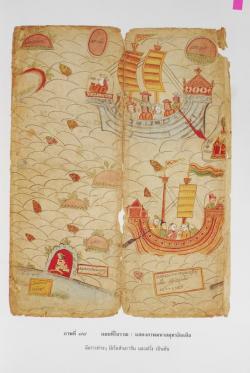Ayutthaya from an economic standpoint

Wat Chai Wattanaram
Source: Google images
Origin and a brief history of Ayutthaya
The Ayutthaya kingdom was a Siamese kingdom that existed from 1350 to 1767, but it did not become a thriving city until about 1378. It remained the flourishing capital for about 400 years. During which time it grew to be one of the world’s largest and most cosmopolitan urban areas and a centre of global diplomacy and commerce. The city was assaulted and wrecked by the Burmese armed forces in 1767 who set the city ablaze and forced the occupants to desert the city. The city was never reconstructed in a similar location and stays referred to today as a broad archaeological site.
Ayutthaya remained the capital for so long for a number of reasons. For one, it was home to an extensive trading port that welcomed international merchants, many of whom were from Europe.
Ayutthaya’s culture
Religion
- Ayutthaya's main religion is Theravada Buddhism
- Many of the elements were incorporated from Hindu scriptures and were conducted by Brahmin priests.
- The people also believe that the natural world was also home to a number of spirits which are part of the Satsana Phi. Phi, which are ancestral spirits that protect people, or can also include malevolent spirits
- Phi was believed to influence natural phenomena including human illness and thus the baci became an important part of people's identity and religious health over the millennia

Khon performance
Source: https://en.wikipedia.org/wiki/Ayutthaya_Kingdom#Culture_and_society
Arts and Performances
- The royal court of Ayutthaya developed classical dramatic forms of expression called Khon
- It is traditionally performed solely in the royal court by men in masks accompanied by narrators and a traditional piphat ensemble.
Literature
- Ayutthayan literature (as well as Thai literature before the modern era) was dominated by verse composition (i.e., poetry), whereas prose works were reserved to legal matters, records of state affairs and historical chronicles.
Most people think of Ayutthaya in terms of its cultural heritage, but people overlook the significance of economic activities it provided during its time. These activities also provided a multicultural environment and contribute to “social mobility”. Through awareness of Ayutthaya from an economic standpoint, we will better understand what kind of city was like.
Brief Introduction of its economical aspect
- During the Ayutthaya era (1351-1767) commercial wealth contributed to the emergence of proto-entrepreneurial groups.
- These groups impacted society and the economy, which later became the forerunners of the bourgeoisie (middle class).
- They could be classified into four categories
- private merchants and tax farmers
- trade experts and court merchants
- traders and peddlers
- local officials
- Wealth was not determined by money but in terms of manpower or the number of cows and cattle a person owned.
- Manpower was such an important asset that ordinary people could ask for loans by using themselves as collateral.

Plain Sailing
Source: https://www.bangkokpost.com/thailand/special-reports/1233010/the-truth-about-ayutthaya
How trade worked during its time
- Ayutthaya was a multicultural city with an immense number of foreign settlers.
- The king set up departments to control royal trade and monopolise exports and imports creating a class of foreign, local and mixed-race entrepreneurs.
- These entrepreneurs then sought products for sale and deployed Chinese junks and carts to transport their goods.
- The Chinese were the largest foreign population dispersed, and many married local women and settled here, transferring agricultural knowledge and metallurgical skills to locals.
How society provided for mobility with labour migration
- Society was not rigidly structured and the kings used suitable people for the job, regardless of their race.
- The Japanese were present in Siam from the early 16th century. Most were Christian fugitives fleeing from religious persecution.
- They were driven out at first but returned to trade products such as
- Deerskins used to make armour
- The skin of stingrays used to make scabbards for samurai swords
- The Portuguese were the most important European community in Siam, their influx benefited Siam, especially in terms of military services.
- Around 4,000 Portuguese lived in Ayutthaya and they were largely engaged as
- Mercenaries
- Jewellers
- Navigators
- Translators
- Doctors
- Confectioners
Ayutthaya as a centre of international trade
- Sailors would stop their vessels in Ayutthaya before travelling further, making Ayutthaya a vibrant trade city.
- Siam traded tin, rhino horn, ivory, coconut wine and forest products to China.
- European traders imported Chinese and Japanese goods to sell in Ayutthaya as well.
- Commoners profited from business activities by trading a wide collection of products such as
- Food
- Fish
- Textiles
- Furniture
- Metal mortars
- Ready-made partitions
- Wooden furniture
- Bronzeware
Conclusion
People without the knowledge of their past history, origin and culture is like a tree without roots. It’s economical history and the importance that it provided during its time is a treasure by itself. Preserving it would also mean educating people of future generations to come.
Source



Hi Jun Wei, good findings on the economic standpoint and the fine details of how the settlers and the people of Ayutthaya lived in the past. You might want to look deeper what you can come up with the concept of economics, the origin and culture. What can be useful in terms of these treasure findings from the past to the new? Thanks!
ReplyDelete